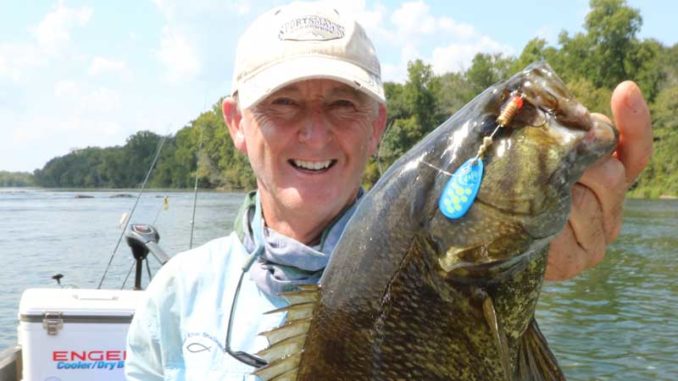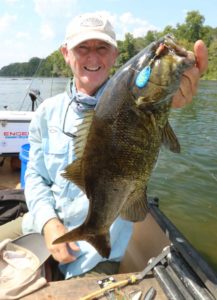
Cool water and aggressive fish make for great paddling, smallmouth fishing
It’s hot, and that makes fishing on some bodies of water pretty tough, and not just for the angler. Many fish spend the dog days of summer trying to beat the heat throughout the day, opting to eat only in the early morning and late evening.
But that’s not the way smallmouth bass spend their summer days on South Carolina’s Broad River. This water is much cooler than most places, and the smallmouth can eat all day-long.
Canoes and kayaks are the most-widely used craft for anglers on the Broad. That’s partly because boat ramps and other public access points are very limited. It’s also because the rocky nature of the river makes any other kind of boat non-feasible. Wading is very popular, even among canoe and kayak anglers, especially this time of year. Standing in the cool waters for just a few minutes can make the July heat bearable, especially when you’re reeling in fish.
Mike McSwain has been fishing and guiding on the Broad River for more than 10 years, and he loves fishing in July. The water level, which can fluctuate depending on the weather, is usually what he calls “perfectly low” this time of year. That exposes more of the rocky shoals that smallmouth gather around. And this gives anglers specific targets to cast around.

Smallmouth are voracious eaters
McSwain uses many different lures and has success with most. Mepps Aglia spinners, and the Black Fury, also from Mepps, are tough to beat.
“Both of these lures are great. They give off different vibrations than each other, and they run at different depths,” said McSwain, who operates Broad River Smallmouth Guide Service. “So when the Aglia isn’t producing, switching to the Black Fury can get them biting, and vice versa. But often, they both work equally well.”
McSwain (843-763-3805) said those lures are best fished when cast upriver at a 45-degree angle. Anglers should retrieve them quickly enough that they don’t lose contact with the lure due to the current. Casting directly upriver is not advisable. The current will carry the lure downstream quicker than the angler can reel. This makes it difficult to detect bites.
Soft plastic lures are also good bets. McSwain likes the Zoom Ultra-Vibe Speed Craw, Texas-rigged. It’s good in the current, around rocks, and when cast toward the banks around downed trees. He said anglers can pick up fish that short-strike this lure by quickly reeling it in, then casting back to the same spot. But instead of letting it sink, he begins reeling before the lure hits the water. Then he burns it back, keeping the lure gliding along the surface.
“Most people don’t realize how effective fishing weighted soft plastics on the surface can be. But it’s deadly on this river,” he said, “especially on a fish that just missed it on the bottom.”


